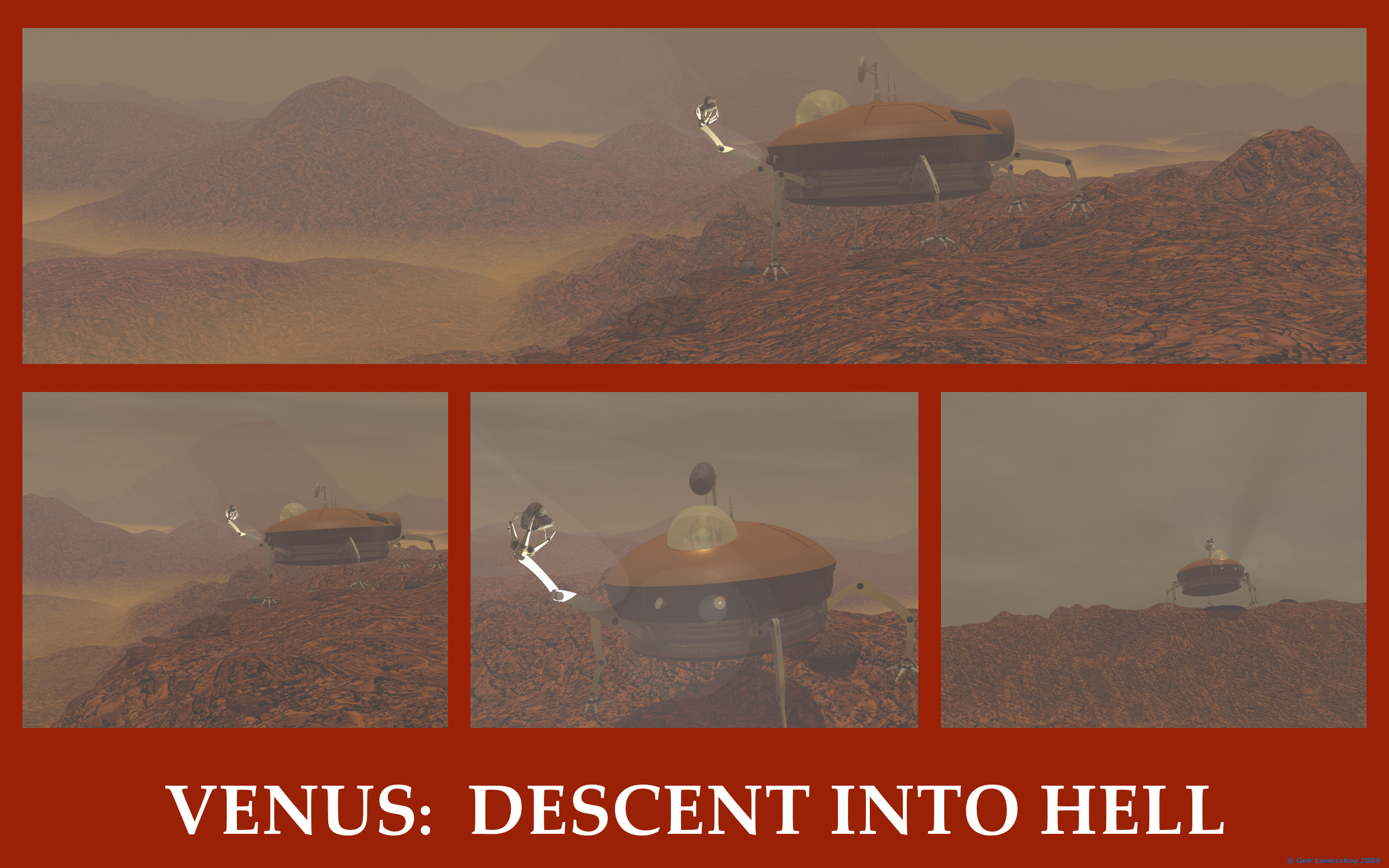
 |
|||||||
|
|
|
|
|
|
|

Venus: Descent Into Hell
Venus is Hell incarnate. Its slow rotation doomed it. Bereft of a
magnetic field and subject to month-long days, the world's water escaped to
space. The oceans boiled. The tectonic plates seized up and lava
flooded the planet. For hundreds of millions of years, the surface baked
under ninety atmospheres pressure, a burning, crushing Hades.
Nearly a century ago, the Commonwealth authorized the Venus Terraformation
Project, a plan to give the human race another livable world, a hope that future
generations might be spared extinction in the event of another World War.
It will take centuries more for that plan to be realized. For over four
decades, multi-kilometer sized ice balls from the Kuiper have hammered the
planet, unleashing dinosaur-killer blasts many times each year, slowly adding
back water, blasting away the atmosphere and adding rotation to the world.
The day is still too long, the temperatures still too hot and the atmosphere
still too thick. In just a few more years, superheated rain will begin to fall.
Then will come hearty microbes, fixing the carbon dioxide into limestone and
burying the hellish lava surface.
Nobody lives on Venus full-time. Even in the upper reaches of Ishtar
Terra, the equatorial bombardment is too fierce -- the hurricane force blasts of
the impacts reverberate around the world dozens of times. But in the lulls
between, science teams occasionally descend onto the surface, hurrying to carry
out geological surveys before the surface of hell is paved over to make ready a
new home for humanity.
--Grand Tour 2150: A Guide to the Solar System, Euphoria Press
All pages and images ©1999 - 2009
by Geir Lanesskog, All Rights Reserved
Usage Policy
![]()